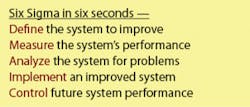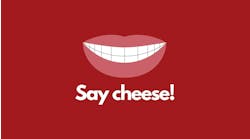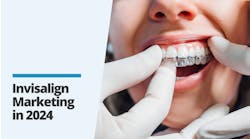by Brett O'Donnell and Joseph O'Donnell
Imagine that you are in England during the height of World War II. You are part of an engineering team facing a tough challenge: increase the chances that the planes protecting England will make it home safely.
You’ve got precious little time and limited resources, so you must be as efficient as possible. The mechanics who work on planes that made it back to base are suggesting you reinforce the wings because they have the most bullet holes. Adding supports may make the wing stronger, but the weight increase will lower the payload of the aircraft. Given your limited resources, what do you do?
The engineering team who faced this question examined the data carefully and came to a surprising realization: The supports the mechanics added to the wings did not increase the plane’s chance of survival. The mechanics who recommended reinforcing the bullet holes were ignoring a critical fact - they were biased because they were only inspecting the planes that were making it back safely!
In fact, the engineers found that the areas without any bullet holes were the areas that mattered most - if even a single bullet hit one of those spots, it would cause catastrophic failure. Observation and experience told one story, while math and science proved another.
This shift in thinking was the birth of systems engineering, which uses mathematical modeling, algorithms, and objective scientific research to guide decision-making. In fact, World War II served as the catalyst for modern work improvement. When the war ended, thousands of trained soldiers came back with management and leadership experience.
During World War II, the military was one of the largest employers in the world. However, without the massive resources and funding provided by the military, it was much easier to put the interpersonal advances in management into practice than the analytical ones.
With the advent of computers, small businesses finally have the ability to collate and interpret data beyond the wildest dreams of engineers several decades ago.
The benefits of a systems approach to your practice
The mantras of “doctor as the leader,” “train the staff,” and “know the numbers” are well-recognized dental management techniques. However, when used by themselves, these techniques have limits that depend heavily on personality, motivation, and the longevity of the people in the office.
Systems engineering, by contrast, focuses on business improvements using math and science to develop systems that people learn and follow to ensure a successful outcome. While dentistry has embraced traditional management sciences, because of past technology limitations, we are just now starting to appreciate the newest advances in management sciences.
There are three major advantages to focusing on systems to run your dental practice:
• First, systems are transferrable.A system that works well in one dental practice can easily be transferred to another office of the same style. “Doctor as the leader” is still a useful cornerstone of managing a successful dental practice. However, having a well-defined system gives everyone a concrete, achievable outcome toward which to work.
• Second, well-designed systems can be mathematically monitored. The engineering approach toward “know your numbers” allows us to objectively verify that changes to your system are actually working. By doing more than just simply tracking the numbers, we can see how they interact, which gives us traceable, provable results.
Finally, stress is reduced in the practice where everyone knows exactly what his or her job requires.The systems-based approach becomes a solid foundation toward training new employees and creating a long-living practice that can outlast any one individual. Training is made easier because the new staff member knows - from day one - what is expected. New staff members fit into an existing, cohesive system.
Engineering for the dental practice
Systems engineering has three major applications to dentistry. Although each exists on its own merits, when used in concert, these new management sciences become most powerful.
- Process mapping
- Six Sigma/LEAN
- Cognitive Science
Process mapping: Define your existing systems
A process map is a tool that systems engineers use to better define the sequence of events that build a product or produce an outcome. It is a helpful tool for management because it creates a visual representation of a system by helping to define and clarify all of the individual steps and options available.
There are several benefits to mapping the systems in your practice. Take the time to combine everyone’s experience and invest the time into learning the best way to do any job. By having your systems mapped out, you can make sure everyone in the office is on board with the best way to run the office at all times. Personal interpretations that can cause confusion are eliminated.
Try this scenario: Six people split up to paint two rooms. In one room, the three people get together and plan out what color to paint the room, who is responsible for each section, and what materials are needed before starting. In the other room, each of the three people makes each of these decisions independently. Guess which room is painted most economically and efficiently?
Laboratory and chairside procedures are good places to start because charting the flow of physical movements is often easier than following the flow of mental steps, such as in answering questions on the telephone.
Six Sigma/LEAN: Improve your systems
Six Sigma has entered the world of business by storm. In fact, if you Google “Six Sigma” you will get 29 million results. Six Sigma is a method of quality controls that uses a six-step scientific method to identify and correct quality control issues. Six Sigma is also a mathematical term; one that may be embarrassing to the dental field.
Mathematically, the term Six Sigma refers to less than four mistakes in a million. Are you kidding? Most dentists would be happy with one mistake in one hundred. I know of a high-end practice that uses a low-end lab that is sending back more than one case in every 10 delivered.
LEAN is a process-management philosophy that is designed to make systems run as smoothly as possible by eliminating anything that adds unnecessary complication to the task. For example, in dentistry this would mean reducing the amount of time wasted on anything extraneous to patient care, such as filing charts, submitting insurance claims, and searching for instruments. LEAN can help streamline these repetitive actions so the team can spend more time caring for the patients. Together, Six Sigma and LEAN are a very powerful combination, allowing systems to consistently produce high-quality results.
Using a scientific and mathematical approach is often a more humane way of dealing with management issues than focusing on personality alone. When your practice uses a systems-based approach, team meetings can focus on improvements to the process of patient care instead of getting bogged down in assigning blame for mistakes.
Cognitive science: design your systems to put people first
Cognitive science is an amazing new field that investigates how the mind works. While psychology has studied human behavior for a long time, the breakthrough of computers in the 1980s allowed for major advances in how the biomechanics of the brain could affect the psychology of the mind.
Two cognitive science applications immediately useful to dentistry are visual applications and cognitive linguistics. We can use visual and language cues to flip a switch in the brain. The genius lies in which switches are flipped and where their effects are seen.
An example of a visual application that should be used by dentists is called “the squinting shade match.” When taking a shade for a restoration, squint your eyes until the amount of light entering is reduced. This causes the color-sensing cones in your eyes to become inactive, making the contrast or relative lightness-to-darkness range very evident. An incorrect value will stand out next to natural teeth, while a proper value blends. Use this squinting technique when choosing your shades and the patients and labs will love you.
Cognitive linguistics studies the effect of words and their reactions in the brain. For every word we hear, we have a set of experiences and memories to draw upon. For example, “waiting” conjures up anger and frustration, while “reception” reminds the patient of happy events. No one likes to wait; everyone wants to be received.
Many of the relaxation and sales techniques follow much of the current research found in cognitive linguistics. Become more familiar with the research as it becomes available and stay on the forefront of current business thinking.
Summary
Process maps allow you to define your systems. Six Sigma and LEAN help to identify and correct quality problems with those systems in your office. Using cognitive science lets the systems flow, which allow your staff to perform to their highest level. Sustainable systems allow an office to continuously achieve high levels of success.Dr. Joseph O’Donnell is a former contributing editor for Dental Economics and is the author of Hometown Hero: An Action Guide for Solo Practitioners. He maintains a full-time practice in the Chicago area.
Brett O’Donnell is an industrial and systems engineer who has published peer-reviewed research for the Institute of Industrial Engineers. Through his business, he has brought the science of systems engineering to the health-care field. More than 1,000 dental offices are using the materials outlined in this article.
Reach them at (708) 382-1262, via e-mail at info@springboard business.com, or visit www.springboardbusiness.com.










